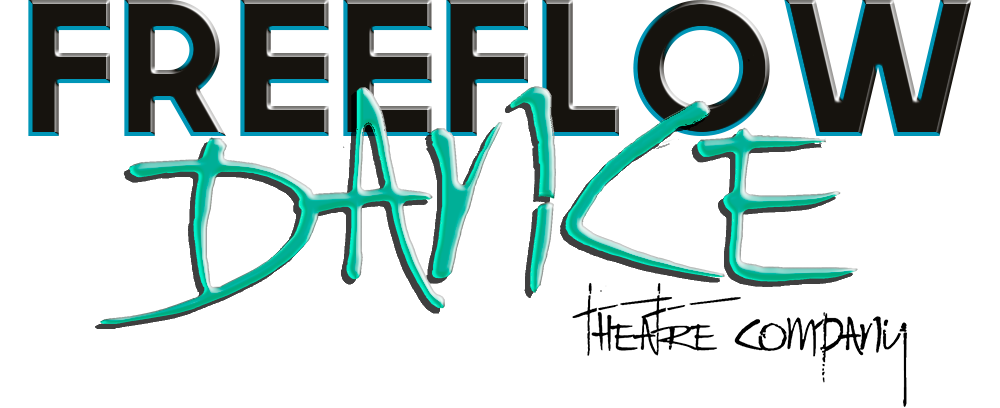An interview with Jackie Latendresse, Artistic Director of Free Flow Dance Theatre, and company apprentice, Emma So.
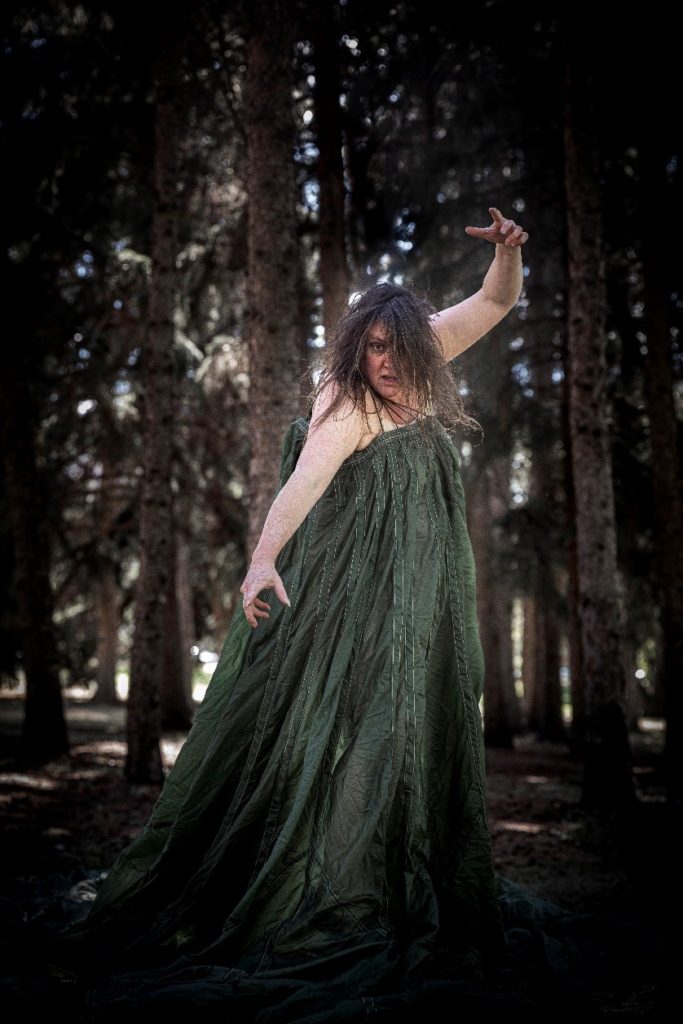
EMMA: If you could describe how you’re feeling in one word, what would that word be?
JACKIE: Prepared.
EMMA: Has the connection between dance, theatre and other arts forms always been important to you, and how did that evolve?
JACKIE: Oh yes. I have a degree in both dance and in visual arts, and I have always been very interested in performance art and theatre. I’ve played music and studied various histories of different types of art forms, so that’s always been part of my purview. I believe in a complete theatre experience. For me that means that although we are a dance company, I use the words dance theatre to describe us because I feel that we are interested in creating work that encompasses more than just dance as a solo art form. We are very interested in the musical element, the staging, the theatrical elements, multidisciplinary elements, lighting, costuming, all the visual elements of production, as well as the actual act of moving.
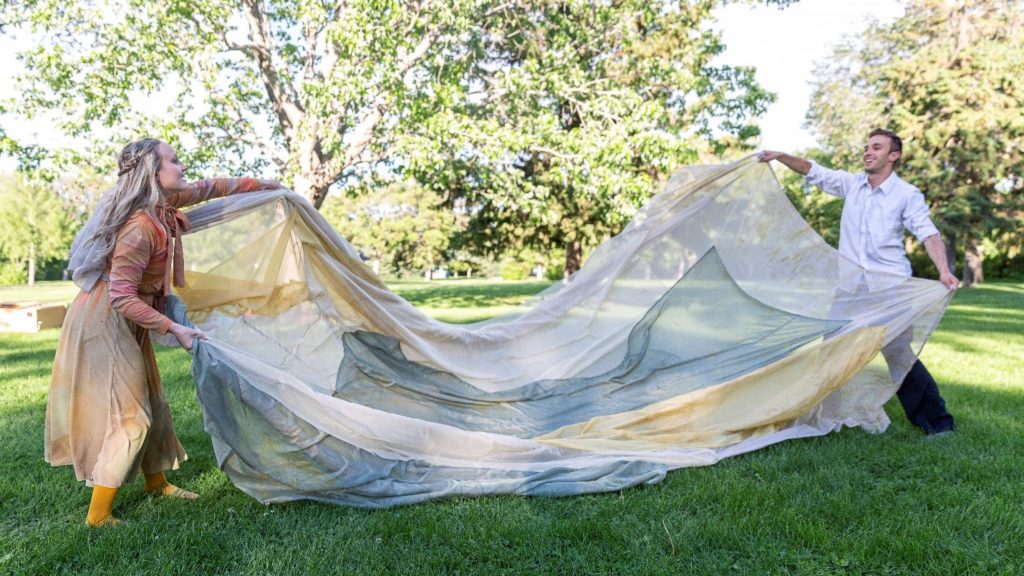
EMMA: Thank you. That was one of the reasons I was excited to work with you guys, actually.
Given your commitment to making dance accessible, not just for the cultural elite, for the financially well off, how did you readjust performing to fit into the post pandemic world, or the “through-pandemic world”?
JACKIE: With limited audience sizes we do have to be very aware of the financial end: being actually unable to accommodate larger audiences, or to sell as many tickets. It makes you much more aware of the bottom line. That said, our mandate is to make dance an accessible art form that can be experienced and enjoyed by everyone. So, we got a little creative in our ticketing platforms and we’ve been working with a choose your own ticket price for the majority of the past year and a half, where we offer a tier of different ticket prices including a certain amount of free, or low-income tickets and ranging upwards in financial increments. We ask our audience to select a ticket price that is suitable to their situation. A lot of folks have been laid off or are working part time or have limited hours, or have had limited hours or short layoff periods during the pandemic and are not as financially secure as they normally are. For other folks, it’s been business as usual in terms of work hours and wages. It’s kind of on the honor system, we don’t inspect their finances when they choose their ticket price, but we have explained that if you choose a higher ticket price you are helping to pay for someone’s low-income ticket because we do start our tickets at either $0.00 or $5. Obviously, you can’t do much for $5 anymore, I think you can maybe get a fancy coffee if you’re lucky. So, $5 is definitely not covering the cost of a person’s ticket especially when numbers are limited. We have higher-tiered tickets where people can choose to pay more for their ticket and they can do that knowing that everyone who’s attending is getting the same awesome show, and they are helping to supplement those low-income tickets that we are providing. In this day and age, to purchase a ticket for a live performance usually it’s $20 and up. That’s for a basic show, and we’re doing some pretty fantastic things with what we have so I definitely think people feel like they’re getting their money’s worth. People feel good knowing they get to support other people who need the stress release too, even if they can’t financially afford it at the time. They all want to come out and have a little bit of fun and enjoy something that is a bit of a break from reality.
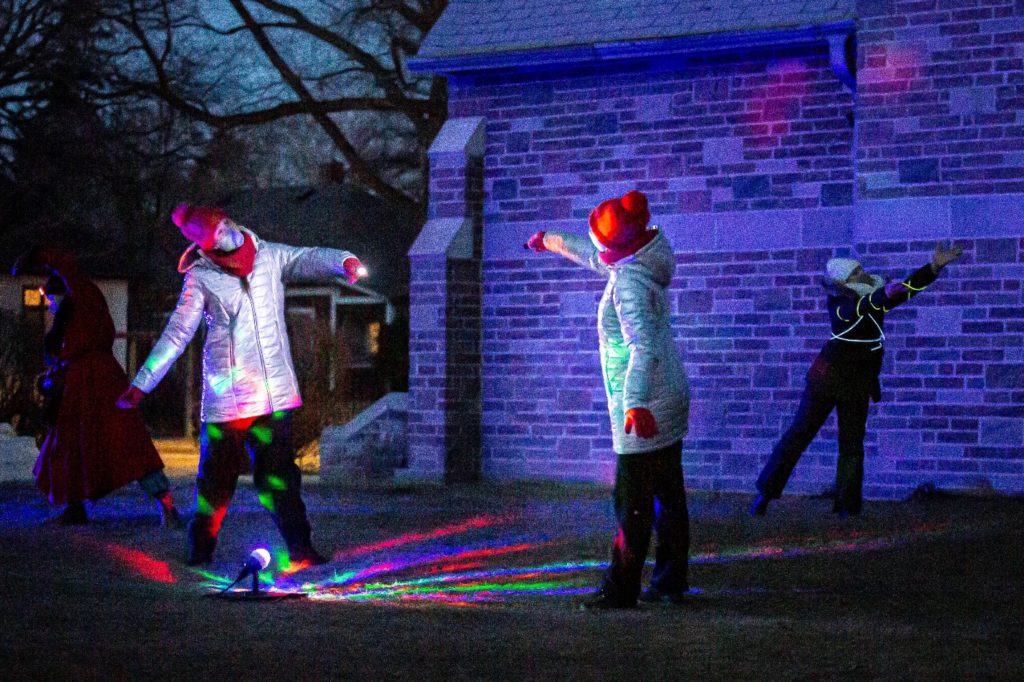
EMMA: Speaking of our shows, have you had any surprises working outside? Pleasant or otherwise.
JACKIE: Outside provides a ton of challenges that are not normal for people who are used to working in a very environment-controlled studio or theatre space. We’ve worked in a lot of different locations including privately owned locations. We’ve worked in secure locations where areas can be closed off, and we’ve worked in completely open public spaces. Each of them provides their own different challenges. Of course, in Saskatchewan we’re dealing with weather. Whether that be heat or cold, there is the extreme here in Saskatchewan, so we have definitely dealt with a lot of weather. We have dealt with everything from needing to pack sunscreen and bug spray as part of your toolkit to dealing with the aftermath of blizzards where you’re literally shoveling out your performance area in hopes that it will be ready by the time the show opens. We’ve also dealt with a lot of permits in terms of performing and working in public areas in the city, and that’s a new territory for us. Not difficult, just new. And so, we have been adding new skill sets and new checklists on the to-do list in terms of what has to happen to make a show go ahead. Often we are working without easily accessible facilities like a warmup space or a washroom facility. Timing is the key and being prepared for long hours. Having backup plans, arranging different places that we can get to that are reasonably close to where we’re working has also been a challenge, but it’s also allowing us to connect with some new businesses as well, through what we’re doing. Hopefully they’ll remember us, and we’ll have the start of a new relationship with them.
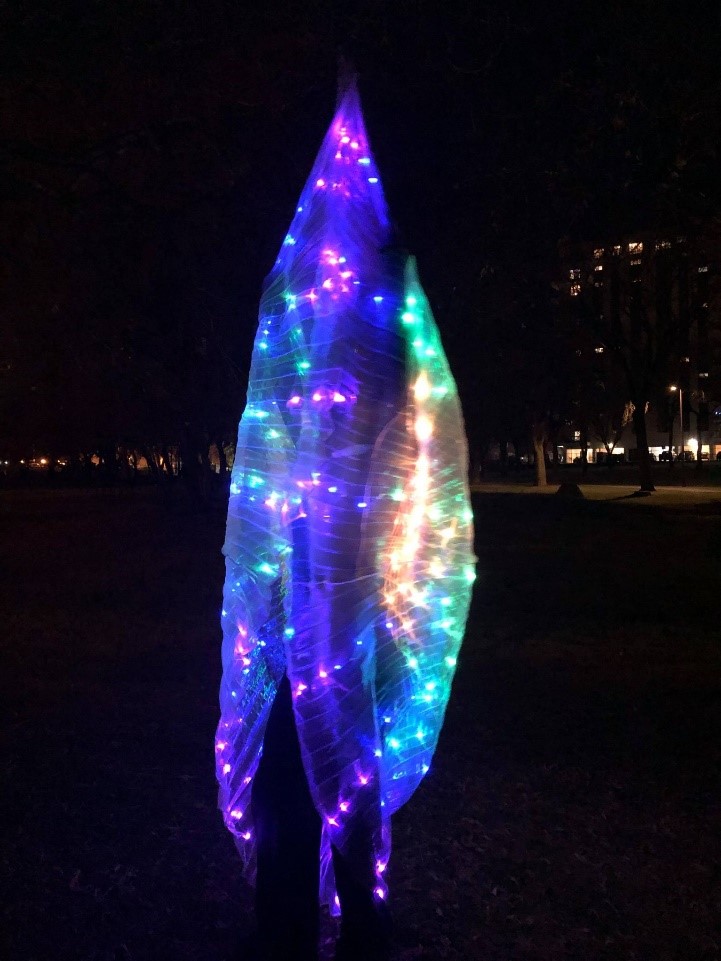
Of course, outdoors, there’s the human element. The human element is always a challenge. In private spaces not so much, because there aren’t a lot of random people walking through the space but working in a public space like a park is very public-facing, and people are curious. We’ve seen the good, the bad and the ugly. Humans are having a hard time right now with the pandemic, there are a lot of personal issues going on for everybody. There are a lot of people that come across us and we’re a bit of joy in their day. We’re a little light, a beacon of hope that art is still happening, and people are still creative, and they walk away from their brief experience of witnessing a rehearsal feeling good and positive. You know, feeling like they came across something rather special. And perhaps they’ll come to the show? [chuckles] and they’ll be more interested in us and what we’re doing than they were before, that’s for sure. Certainly, we’ve gotten a lot of random social media from people filming or photographing various rehearsal bits and bobs… That’s always exciting because it means people are interested in what we’re doing, and that we are making a good spectacle of ourselves in public places. We’ve had a lot of people come up and ask questions like, ‘who are you?’, ‘what are you doing?’ and ‘what’s this all about?’. Most of the time, it’s a very positive experience for them finding out that there’s a dance company in the city here and that we’re working and we’re trying our best to keep creating new and interesting works for people; entertaining works, during a pandemic when people need to be able to feel safe and get out of the house. For outdoor shows I’ve had nothing but positive feedback from folks who have come. Then of course, we’ve dealt with some negative elements: such as, machinery coming through your space, really loud equipment, and construction happening. We’ve dealt with people using the space that we came to rehearse in for other purposes and learned how to navigate and share space with other people, in a respectful way, in respect to what they’re doing and what their life experiences are currently. Trying to be a good neighbor, I guess, is the best way to put it; coexist with people who are regulars in that space who hang out in that space, that’s their space that they go for their daily walk. There was one gentleman who came by every day and told us a joke [laughs] Right? Having this sort of interaction with each other is always a negotiation, it’s always on going, and you need to grow as a person in order to be able to understand that every single person that you encounter in a public space has a different situation. They have a different reality; they have a different existence. There have been a few negative interactions, but I really think that the majority of the interactions have turned out in a positive way ultimately, by being respectful and by being cognizant of the situation. We’re currently all in this pandemic and it’s very stressful for everyone in very different ways. I mean for us, we’re just trying to work and we’re just trying to create magic, but for other people they’re just trying to survive.
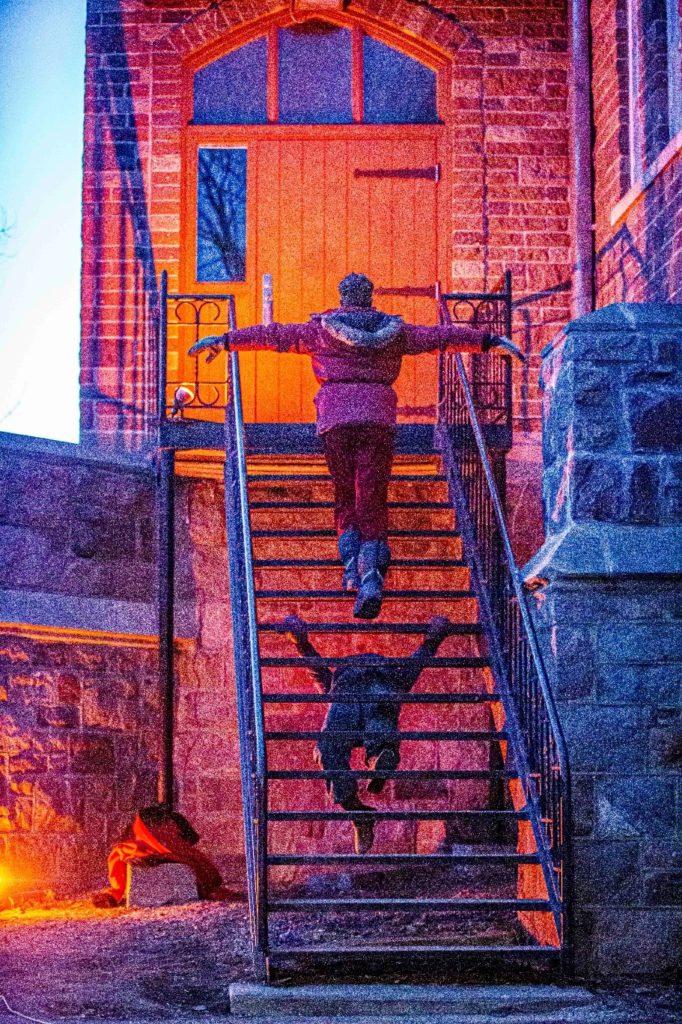
EMMA: Yeah. Can you touch on why you launched the free Brain Body Connection series for emerging, professional, and preprofessional artists, and other movers?
JACKIE: Yes. We actually launched the Brain Body Connection workshop series several years ago, pre-pandemic. It has always been a part of our free Community Workshop Program, which was mostly originally done in person. It was an offshoot of the original Community Workshop Program, and it is designed to take the program up to another level in terms of artistic offering. It offers a level of difficulty in terms of concepts, comprehension, and professional development perhaps, for movers of all kinds. That can include dancers, theater people, musicians, actors, puppeteers, anybody who’s working in a physical field. We’ve had schoolteachers come, people working in somatic practices, and people working in a lot of peripheral practices that surround dance including mime, clown, and circus arts… those types of things. Because the work for the Brain Body Connection series is concept-driven, not technique-driven, it doesn’t require that you’re a dancer to attend. It just requires that you are seeking to develop your professional skills through movement practices. It could be in combination with other things like spoken word and movement, sound or music and movement, or it could be kinesiology based, or it could be more improvisation based. We have had lots of theatrical based workshops. During the pandemic we were unable to gather as a company to train together, so we decided to bring the workshop series online. Originally it was for the company dancers and then we decided “hey, this could be for everybody”, so we opened it up and we’ve had people attend from across North America in Canada in the U.S. and Mexico. By having it hosted online, we’ve been able to secure instructors from all over the place as opposed to just locally based. Having it online has allowed us to open it up to other artists across Canada, and it’s brought national attention to the program, because it has consistently been running for the entire pandemic. It’s still running. It will be the type of program that will continue to run as both an in-person and online option, from now on, because I think it’s successful in that format. I think that the technology does not always work for every type of situation, but I always tell people “Oh, have you got zoom fatigue? You should come and take a dance class”. They are totally different than have a meeting on zoom.
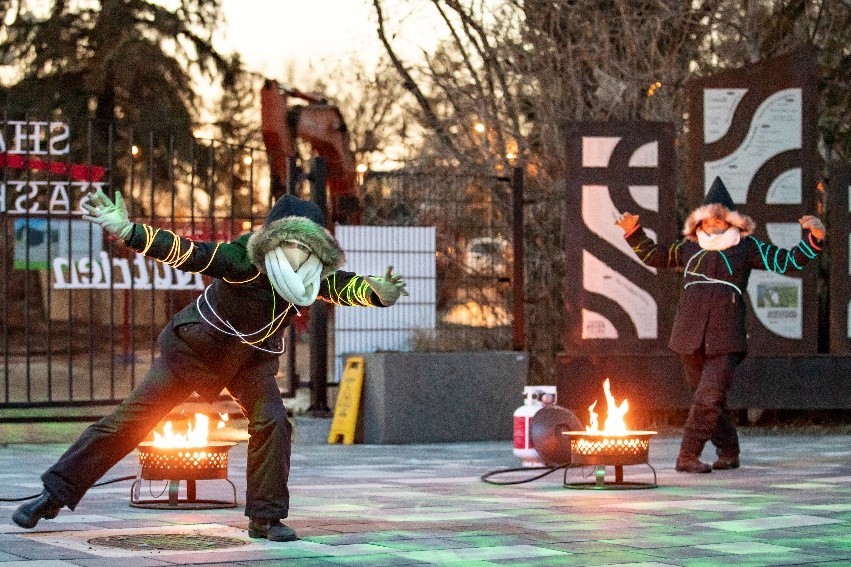
EMMA: Yeah, I can definitely see moving that online. That’s kind of a strange community side effect of the pandemic that these workshops have broadened who can take the workshops (any kind of workshop, but this series in particular). And it’s also broadened who can teach them. It sort of includes more of a diaspora, and it can open up your community and be really welcoming, so I really admire that. And it’s how I got connected to you guys, originally. I was takin’ a yoga class with Terrill Maguire you know?
JACKIE: Yes, yeah. I think you’re right; I think it’s a pretty big net that’s been cast out, and there’s been a lot of people connect through that series, and then continue to stay in touch with the company and what we’re doing period to either participate, or to become patrons of other things that we’re doing.
EMMA: I wanted to end with one last question: whom would you like to thank in this moment for helping you along your way?
JACKIE: Well, I feel very fortunate that I have a small, working board and as a small company we’ve had, I think, an easier time altering and changing our programming and our events, because of that. My Board of Directors have been super supportive of all the two-steps around that I’ve done to make things continue with the company. I would thank the original company members during 2020, it was a rough year for everyone, and very, very sad for a lot of artists, because a lot of the work that we had been doing did not come to fruition. There was a pretty heavy grieving process in terms of how many gigs you cancelled, how many performances were gone. You know, you felt like relationships were dissolving all over the place, and money was hemorrhaging. There were a lot of elements that were depressing and difficult. I feel like the company members that we had in 2020 stepped up to the plate in terms of making an effort to bear with me as I found alternative measures. Of course, as a seasoned professional, I felt like a newbie three or four times a day, because I was learning new skills. I was adapting my own methodology to work in a world that didn’t exist before the pandemic. It was disheartening but the company had faith in me and were helpful, positive, and a joy to work with during the pandemic. And that’s continued into 2021. We feel a little bit more organized this year [chuckles]. But the artists themselves that I got a chance to work with they made it happen and they made it worthwhile for me, because everyone had something to say, and they had prioritized being a creator and a performer in their lives, during a time where everyone was reorganizing their priorities. So, if you made it through, and you chose to dedicate your life and your work to creative endeavors, that tells you something about the level of dedication and commitment that people have. We had to rearrange all of our priorities, in order to succeed, during the pandemic. And to try to do it safely and wisely. I can’t thank all the artists enough. It’s humbling to be able to work with such talented people who have such a positive outlook and who are committed to peeking behind all the doors, and not shutting them. [laughs] So, I think that that’s how we find the magic in it. It’s a collaborative effort. As a team leader, I try to be a servant leader. I try to make sure that we’re doing the things that people want to do, that people are comfortable doing, that they are happy doing, and that they are interested in. As far as our audience goes, we have some core supporters who have kept us afloat during the last year-and-a-half by coming out when they can, by making donations online, by giving us support in many different ways. They know who they are. Most of them are very humble and modest so I won’t name names. Without those core people really standing behind us saying: “we love you, we want to see you, and we want you to succeed!” we probably wouldn’t have made it. Because let’s face it: without our audience, it’s just us doing a bunch of weird stuff in the backyard. So yeah, I mean our audience has been great. I think that where my gratitude lies is locally; local businesses and local patrons that got their purses out and supported us, not only financially, but also in kind, and in services, and supports. So, that’s really truly where my gratitude lies, outside of the dance company.

